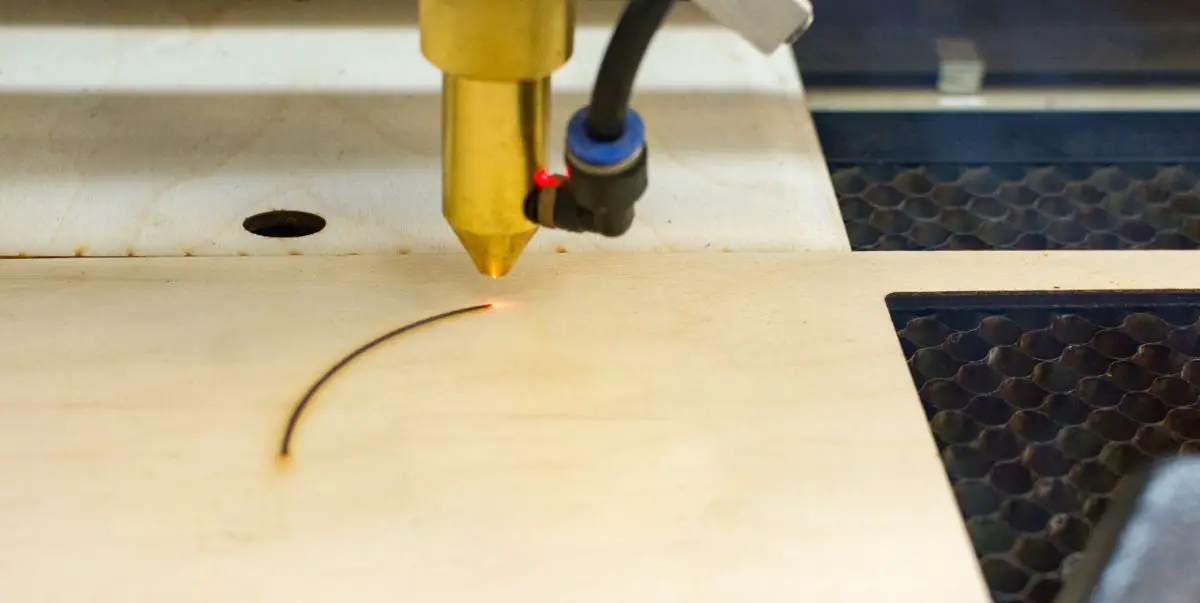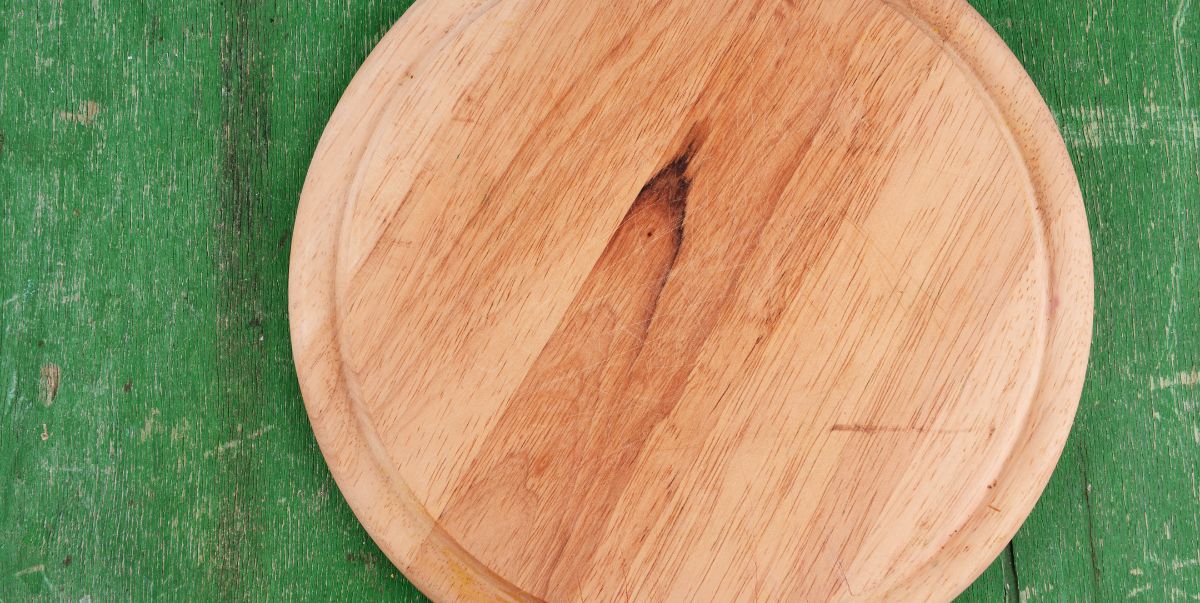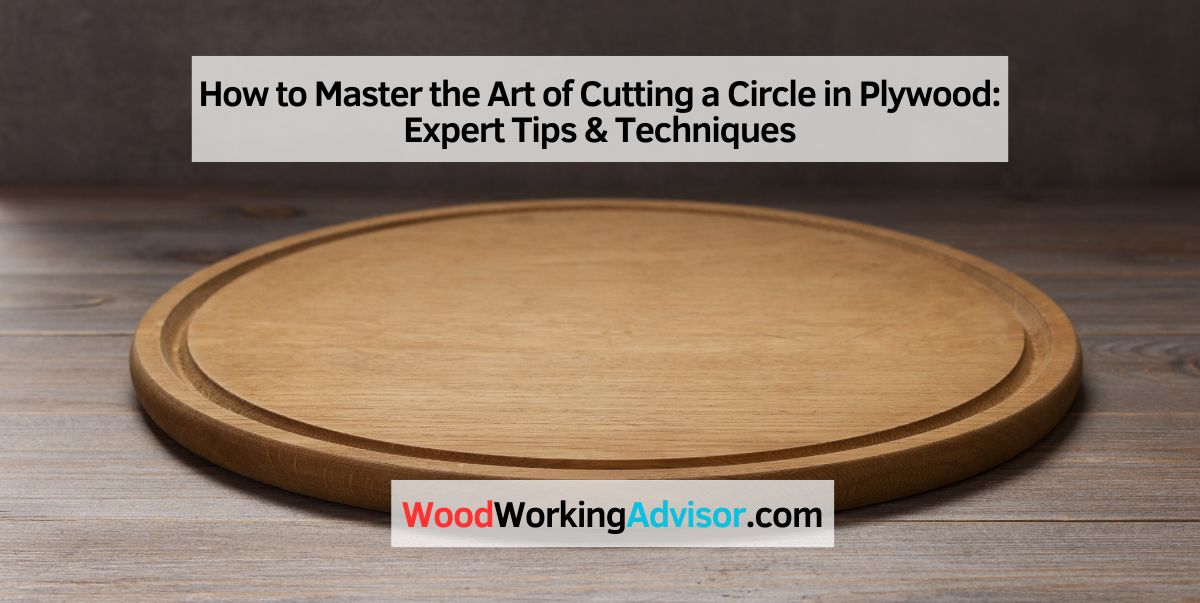To cut a circle in plywood, mark the center of the circle and use a jigsaw or a router. Cutting a perfect circle in plywood can be a daunting task, but with the right technique and tools, it can be easily achieved.
Whether you need a circular piece for a DIY project or a precise hole for a specific purpose, the key lies in marking the center and using the appropriate cutting tool. We will guide you through the process of cutting a circle in plywood by utilizing a jigsaw or a router.
We will highlight the steps involved and provide you with some helpful tips to ensure a clean and accurate cut. So, let’s delve into the details and master the art of cutting circles in plywood!
Choosing The Right Tools
To cut a circle in plywood, select the appropriate tools such as a jigsaw or bandsaw. Mark the center and desired diameter, then securely fasten the plywood before cutting. A steady hand and patience are key to achieving a smooth and precise cut.
When it comes to cutting a circle in plywood, using the correct tools is crucial for achieving accurate and clean results. In this section, we will go over the essentials you need to consider when selecting the right tools for the job.
Selecting The Correct Saw
To cut a circle in plywood, you have a few different options when it comes to saws. Each has its own advantages, so it’s important to choose the one that best suits your needs.
- Jigsaw: A versatile handheld saw that allows for intricate and curved cuts. It is ideal for cutting circles with its narrow blade and ability to make tight turns.
- Band Saw: This stationary tool features a continuous loop blade and is perfect for making precise cuts in various materials, including plywood. It offers greater control and stability compared to a jigsaw.
- Router: While not a traditional saw, a router equipped with a circle-cutting jig can also be used to cut circles in plywood. It spins a bit as it cuts and leaves a smooth, clean edge.
When selecting a saw, consider the size and thickness of your plywood, as well as the level of precision required for your project.
Essential Safety Equipment
Before you begin cutting, it’s crucial to prioritize your safety. Proper safety equipment can protect you from potential injuries and provide peace of mind as you work with power tools. Here are some essential safety items to keep in mind:
- Protective Eyewear: Always wear safety glasses or goggles to shield your eyes from flying debris and sawdust.
- Dust Mask: To prevent inhalation of harmful particles, especially when cutting plywood, wear a dust mask or respirator.
- Hearing Protection: Power tools can generate loud noise levels, so wearing earplugs or earmuffs is crucial to protect your hearing.
- Gloves: Consider wearing gloves to improve grip and protect your hands from potential cuts or splinters.
- Clamps: Secure your plywood firmly in place using clamps to prevent it from moving during the cutting process.
By selecting the right saw and ensuring you have the proper safety equipment, you can confidently tackle the task of cutting a circle in plywood.

Preparing The Plywood
Learn how to cut a perfect circle in plywood with these step-by-step instructions. From measuring to using the right tools, you’ll have a precise cut every time.
Measuring And Marking
Before you start cutting a circle in plywood, the first step is to measure and mark the circle’s diameter. Make sure you have a ruler or tape measure that is long enough for the job. Begin by determining the center point of the circle, which will act as your reference point. From there, measure the desired diameter and mark it at several points around the perimeter of the circle. This will help you create a precise and accurate cut.
Securing The Plywood
Once you have marked the circle on the plywood, it’s important to secure the wood so that it doesn’t move during the cutting process. This will ensure a clean and even cut. One option is to use clamps to hold the plywood in place on a workbench or sawhorse. Alternatively, you can secure it to a stable surface using screws or nails, making sure to avoid the areas where the cut will be made. This will provide stability and prevent any unwanted movement while cutting.
Mastering The Cutting Technique
Cutting a circle in plywood can be tricky, but mastering the cutting technique can make the process much easier. By understanding the nuances of starting the cut and maintaining precision, you can ensure a clean and accurate cut every time.
Starting The Cut
To begin cutting a circle in plywood, it’s crucial to secure the plywood to a stable work surface, ensuring it won’t move during the cutting process. Place the circular cutting guide at the desired center point of the circle and secure it to the plywood using clamps. Double-check the positioning to avoid any misalignment in the cut.
Maintaining Precision
When it comes to achieving a precise cut, using a sharp, high-quality jigsaw blade is essential. This allows for smooth and accurate cuts, reducing the likelihood of splintering or jagged edges. Additionally, maintaining a consistent cutting speed and angle throughout the process is crucial to ensure a clean and uniform circle.
Tips For Perfecting The Circle
If you’ve ever tried cutting a circle in plywood, you’ll know that it can be a bit challenging to get that perfect shape. However, with the right techniques and some practice, you can achieve excellent results. In this section, we will explore some valuable tips that will help you perfect your circle-cutting skills. Let’s dive in!
Cutting Practice Pieces
Before executing your cut on the actual plywood, it’s wise to start by practicing on some scrap pieces. This way, you can get familiar with the process and make any necessary adjustments before committing to the final piece. Prepare a few test cuts on small plywood scraps, aiming to refine your technique and gain confidence.
One method you can try is using a jigsaw with a narrow blade designed for cutting curves. This will allow you to maneuver more easily and make precise cuts. Take your time and follow your pencil mark closely as you guide the jigsaw along the circular path. Remember, practice makes perfect, so don’t hesitate to repeat the process until you feel confident in your abilities.
Fine-tuning The Process
Now that you’ve gained some cutting practice, it’s time to fine-tune the process. One crucial aspect to focus on is maintaining a steady hand. When cutting the circle, try to keep a firm grip on the jigsaw, but don’t apply too much pressure as it may affect the smoothness of your cut. Let the tool do the work and guide it around the circle with controlled movements.
When using a jigsaw, it’s recommended to cut slightly outside of your penciled line. This will give you some room for adjustment and allow you to sand down any imperfections later. It’s easier to remove excess material than to add it back, so be cautious not to cut too close to the line.
Another helpful technique is to rotate the plywood instead of moving the jigsaw around the circle. This can offer better control and stability, especially when dealing with larger circles. By keeping the tool steady and rotating the material, you’ll have a smoother cutting experience.
To prevent tear-out or splintering on the edges, consider placing a sacrificial backing board underneath the plywood. This additional layer will support the wood fibers and minimize unwanted damage, resulting in cleaner edges.
Once you’ve completed your cut, inspect the circular shape and make any necessary adjustments. Use a sanding block or sandpaper to smooth out any uneven areas and refine the edges. Remember, practice and attention to detail are key to perfecting your circle-cutting skills.
Finishing Touches
Once you have successfully cut a circle in your plywood, the next step is to give it those finishing touches that will make it look professional and polished. These finishing touches include sanding and smoothing the edges, as well as applying a protective finish to ensure the longevity of your plywood circle.
Sanding And Smoothing Edges
Sanding and smoothing the edges of your plywood circle is an important step in achieving a professional look and feel. Not only does it remove any rough edges and splinters, but it also creates a smooth surface for painting or staining. Here are some steps to follow:
- Start by using coarse-grit sandpaper to remove any larger imperfections or bumps on the edges of your plywood circle.
- Next, switch to a finer-grit sandpaper to smooth out the edges further. Sand in a circular motion, applying even pressure.
- Pay close attention to the outer edge of the circle, ensuring that it is smooth and even.
- After you have finished sanding, use a damp cloth to wipe away any dust or debris from the surface.
Applying A Protective Finish
Applying a protective finish is crucial for preserving the beauty and durability of your plywood circle. A protective finish not only adds a layer of protection against moisture and scratches but also enhances the natural beauty and grain of the wood. Here’s how you can apply a protective finish:
- Choose an appropriate finish for your plywood circle. Options include varnish, polyurethane, or lacquer.
- Apply the finish using a brush or a foam applicator, following the manufacturer’s instructions.
- Start by coating the edges of the plywood circle, working your way toward the center. Ensure even coverage and smooth application.
- Allow the finish to dry as per the manufacturer’s instructions. This may take several hours or more.
- Once the first coat is dry, lightly sand the surface with fine-grit sandpaper to remove any imperfections.
- Apply additional coats of the protective finish, allowing appropriate drying time between each coat. The number of coats will depend on the level of protection and sheen you desire.
- After the final coat is dry, inspect the plywood circle for any missed spots or rough areas. Touch up as needed.
By following these steps and paying attention to the finishing touches, you can ensure that your plywood circle looks professional and lasts for years to come. Sanding and smoothing the edges and applying a protective finish are the final steps in the circle-cutting process that truly transform your plywood into a beautiful and functional piece.

Frequently Asked Questions Of How To Cut A Circle In Plywood
How Do You Cut A Shallow Circle In Wood?
To cut a shallow circle in wood, follow these steps:
1. Mark the circle’s center and draw the desired diameter.
2. Drill a hole inside the circle just large enough for the jigsaw blade.
3. Insert the blade into the hole and cut along the marking.
Sand the edges for smoothness.
How Do You Draw A Large Circle On Plywood?
To draw a large circle on plywood, use a compass or makeshift compass using a nail, string, and pencil. Place the nail in the center of where you want the circle. Adjust the string length to half the circle’s diameter and draw the circle with the pencil.
How Do You Cut A Perfect Circle?
To cut a perfect circle, use a compass or a round object as a guide and mark the outline on your material. Then, use a jigsaw or a hole saw to carefully follow the marked line and cut out the circle.
Make sure to take your time and use a steady hand for accurate results.
What Angle Do You Cut Wood To Make A Circle?
To cut wood into a circle, you need to use a bevel angle of 45 degrees.
Conclusion
Cutting a circle in plywood is a simple and rewarding DIY project. With the right tools and techniques, you can achieve precise and professional results. Whether you’re creating a tabletop, wall art, or a decorative piece, mastering the art of cutting circles opens up a world of creative possibilities for your woodworking projects.


